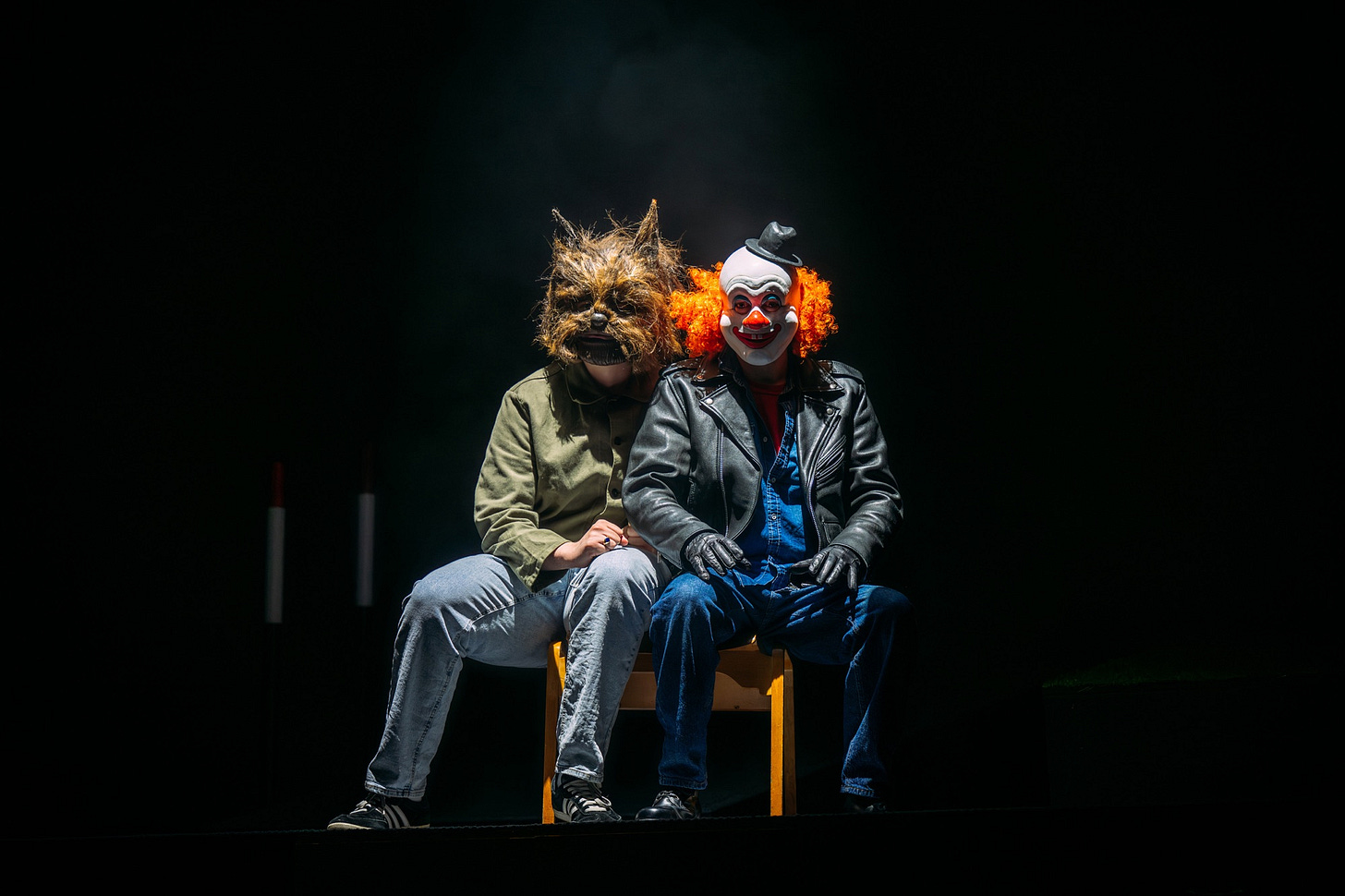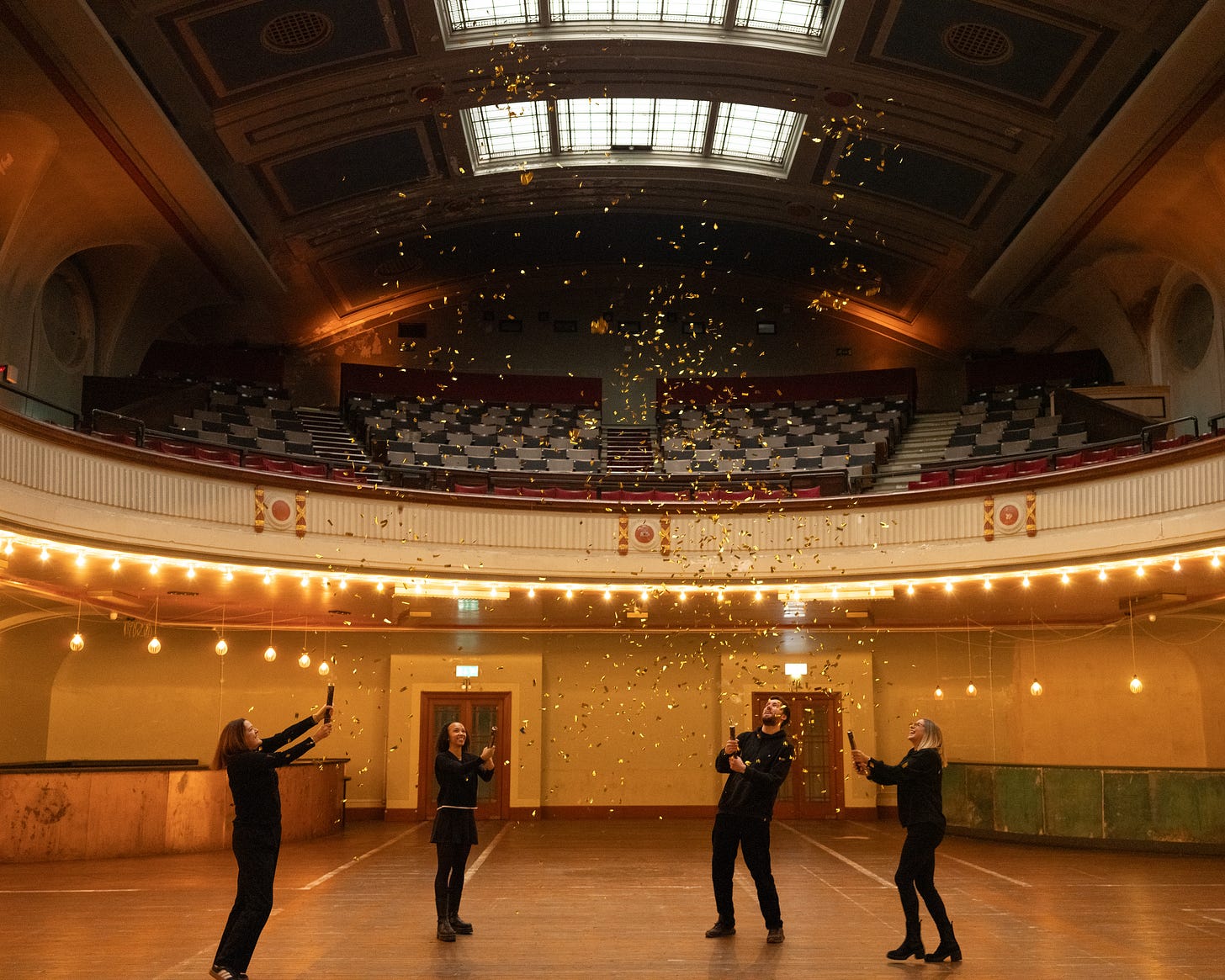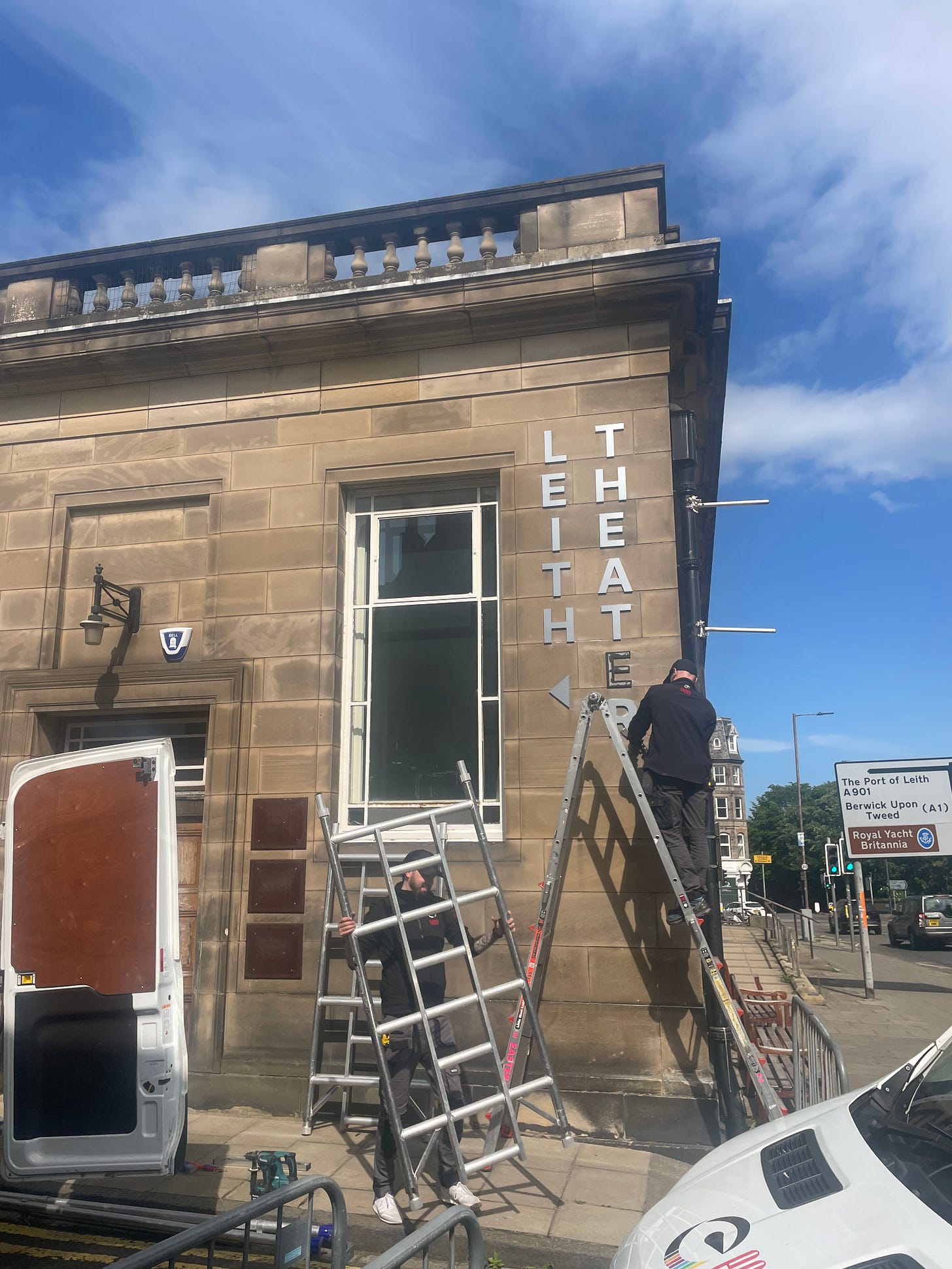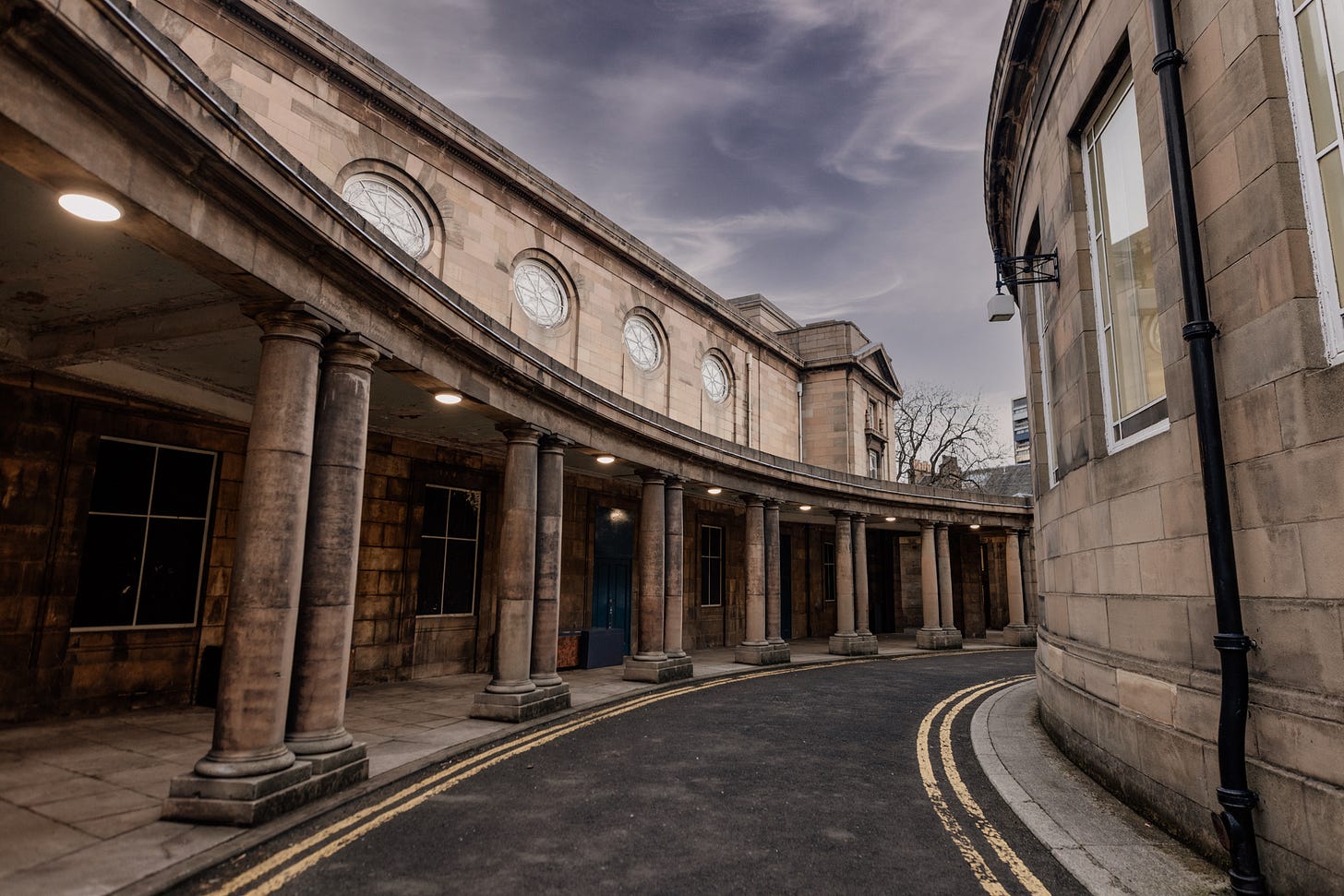Bringing 'the people's theatre' back to life
This summer marks a glorious rebirth for Leith Theatre
There is something apt about the show running at the newly-reopened Leith Theatre just now.
Anyone who has ever been entertained by the daft antics of The Clown and The Wolfman will know Restless Natives is a tale of underdogs up for a fight, of community spirit, identify and pride. It is also unashamedly about the fun and joy of escaping everyday life for a few hours.
It is no accident the new musical adaptation of the 1980s Scottish cult film has been chosen to launch the summer season at the reborn venue.
Slightly edgy, stony broke, yet still a barrel of laughs, it is a dramatic reflection of Leith Theatre itself.
Audiences enjoying the action unfold on stage may not know there is a story of triumph against the odds just as enthralling playing out behind the scenes in the very building they are sitting in.
It’s a tale itself worthy of the spotlight, with high drama, plots twists by the score and a star-studded cast. But mainly it’s a story of community spirit, endurance and tenacity.
A storied past
With its classical façade and art deco foyer, the theatre is a Leith landmark, with a colourful past stretching back nearly 100 years. Since opening in 1932, it has hosted everything from musical hall performances, drama and orchestras, to ballet, rock gigs, film crews, festivals and political gatherings. There has even been a Commonwealth Games weightlifting championship.
It survived a devastating bomb strike during the Second World War. Over the years, musical icons as varied as Benjamin Britten, AC/DC, Kraftwerk, Thin Lizzy, Jarvis Cocker, Teenage Fanclub, The Fratellis and Neneh Cherry have taken to its stage. More recently, it served as the base for a charity kitchen which distributed 1.3 million free meals to the citizens of Edinburgh at the height of the Covid pandemic.
But long periods of closure and decades of neglect had left the B-listed building in a perilous state. Estimates suggest the extensive repairs and refurbishment needed to bring it up to modern standards will cost around £10 million.
Future-proofing
Now, a new chapter has begun, bringing with it the hope that the show will go on. It has only taken 20 years of determined action.
In recent months, urgent work – including installing an electric power supply to the stage, fixing the roof and extensive rot treatment to stop further decay – has been completed. All thanks to £1 million in backing from Edinburgh City Council.
This year has seen three more important steps forward. The biggest are a development grant of £247,979 from National Lottery to progress restoration plans and raise further investment, along with up to £4.2 million of Heritage Fund support that must be matched with fundraising.
A 50-year lease has also been secured, allowing the trust to plunge ahead with the next stage of their plans.
It’s the missing mid-sized cultural venue that Edinburgh needs, according to the team, set within a diverse community of 51,000 people.
So far so good, but there is still a long way to go if the big picture is to become a reality. Around £5 million pounds will need to be raised to secure the Heritage Fund cash.
A gift from Edinburgh to Leith
The imposing Leith Theatre complex, which incorporates Leith Library, the Thomas Morton Hall, Registrar’s Office and a gatehouse, was built as a gift from the City of Edinburgh to the people of Leith. It was bestowed after the port – a separate burgh since 1833 – was merged, controversially for many Leithers, with the capital in 1920.
The 1,500-seat venue opened to great fanfare in 1932, but the glory days would be short-lived. The curtain came down just nine years later, after a stray bomb dropped during the Second World War caused severe damage to the main auditorium.
It eventually reopened in 1961, when it first became a venue for the Edinburgh International Festival. It continued staging a varied programme of events, particularly music concerts during the 1970s. However, use tapered off, until it closed its doors again in 1988.
When plans were drawn up to sell the theatre for redevelopment into housing in 2004, a campaign group was formed to save the venue, which would later become Leith Theatre Trust.
Back to centre stage
Today, Lynn Morrison, chief executive of Leith Theatre Trust, can barely contain her excitement – despite the enormous scale of the challenge ahead of her.
“Leith is such a political community,” Morrison says. “The campaigners decided in 2004 to ‘take it back’, but it took until 2016 to land a short-term lease.
“I think it’s a really interesting story that parallels Leith’s personality; that they campaigned for 12 years to save something they firmly believe in, that it was a gift to the people.”
The building spec needs brought up to date, with a heating system to be installed and toilet facilities expanded – temporary portaloos are currently in place to provide the necessary capacity. Morrison assures me the refurbishment will be “sensitive”, taking feedback from users and the community into account.
“We really don’t want to spoil the place,” she says.
“One of the most exciting things is talking to people and listening to what they have to say about the theatre and how it operates.”
According to Morrison, takeovers by the Hidden Door arts festival in 2017 and 2018, which brought crowds to the “forgotten” site for the first time in 25 years, have been “hugely pivotal”. They helped to raise the theatre’s profile with a new generation and demonstrate its potential.
Use by the charity Empty Kitchens Full Hearts also put it back at the centre of the community, serving as an important wellbeing and social hub and attracting squads of enthusiastic volunteers – many of whom continue to be involved with the theatre.
The trust is also involved in various associated projects, including gathering first-hand testimony of what the theatre has meant to local people, and a student architecture project exploring how the building could be used and future-proofed for the long term.
Anna Higham, funding and finance manager for the theatre, highlights the venue’s long tradition of bringing local people together and providing a place for all.
“Schools and other groups used it quite a lot,” she says.
“We've unearthed lots of stories from the past as part of our Memory Project.
“I think one of the earliest stories came from 1936, from someone who remembered being in the Boys Brigade and playing in the band on the stage.
“It is really nice because the theatre has always had that mix of community and culture all the way through its life.”
With all the coastal development and changes happening in the neighbourhood, she believes the building has become even more valuable in recent times.
“It is soaked in opportunities,” she says, “and we need to make sure it’s future-proof.”
Going forward
Morrison, who has been in post since 2018, hopes the refurbishment work will be finished by 2027, well ahead of the theatre’s centenary in 2032.
She says reviving the theatre will bring “huge opportunities” for Leith and for the whole of Edinburgh. It’s a project that is “worthy of support”.
“Over the past few years we have said yes to opportunities, and lots of them – even maybe those which were not commercially viable. But it was about trying to get the doors open and let people inside.
“It was the very grassroots beginning of trying to tell its new story and potential, to kind of remind people that it's still existent. That was really important.
“I think a whole generation of people had forgotten it was still here, tucked behind the library, and this was a really good way of reminding everyone that there’s an incredible venue hidden here.”
This effort is paying off. There have even been music fans turning up to take selfies at the spot where their idols performed.
That enthusiasm has prompted an invitation to Australian rock legends AC/DC when they are back in Edinburgh this August to play at Murrayfield to pop in for a cuppa and a chance to relive their 1976 gig. Perhaps they can confirm what really happened that night – it is rumoured that lead guitarist Angus Young thrilled fans by climbing the music stack and running round the top of the auditorium.
A homecoming of sorts
As we talk, the Restless Natives crew is doing soundchecks and lighting tests in the main auditorium ahead of the show’s theatrical debut. The place is a hive of activity.
Andy Paterson, producer of the musical, says Leith Theatre’s “unique atmosphere and personality” are the perfect complement for the story, and walking in there “felt like we had come home”.
Another home-coming of a sort is the stage adaptation of Porno, Irvine Welsh’s Trainspotting follow-up. Morrison says the author, a true “boy of Leith”, can also come in for a brew if he is in town.
“We are really excited to bring this Leith production home and encourage locals to come along and support it. And Irvine Welsh can drop by for a cuppa any time.”
Ticket sale for the musical, which runs until 21 June, and Porno, on 18 and 19 July, will help generate much-needed income for the refurbishment but the trust is also appealing for donations to help reach the target.
Hopefully they will not need to enlist Scotland’s favourite motorbike-riding highwaymen to help persuade reluctant donors to part with their cash. But if you do find yourself held up by the Wolfman and the Clown, be sure to give generously.
Anyone wishing to keep up to date with progress can sign up to Leith Theatre’s newsletter and social media channels, while donations can be made on the theatre website here.









